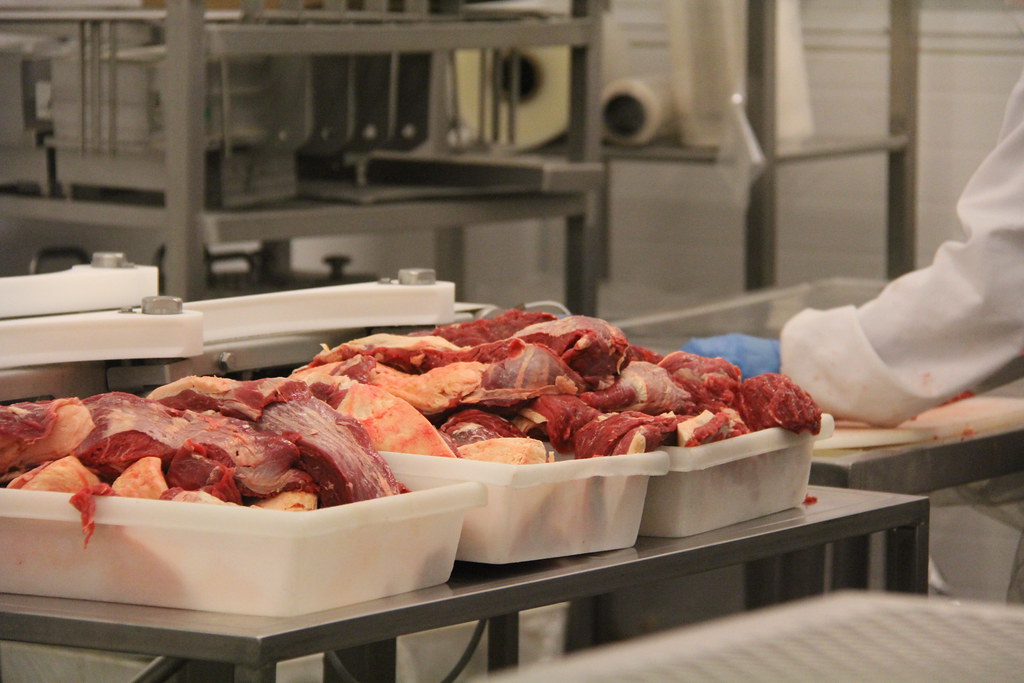
We’ve heard a lot about robots handling food and how difficult they find it. Picking up a strawberry without bruising it, grasping an apple when apples are all different shapes and sizes, frying chips or constructing pizzas with little human assistance, delivering food to restaurant patrons without dripping the food or falling down — robots have been trying to do all these Tass, and improving along the way. We haven’t hear much about robots in the meat-packing business.
Meat-packing is ripe for automation.
On the one hand, meat-pacing is a dirty, dull, and dangerous job. During the pandemic, we saw the likelihood of diseases spreading. Human workers get cut when they debone a chicken, end up with fractured bones from handling heavy sides of beef or pork, and develop infections from contact with dead animals. Also, let’s face it, hardly any meat-packing job is high on anybody’s list of fun jobs.
On the other hand, meat isn’t tidy and uniform. It has the same variety of shapes and sizes that makes sorting produce tough for machines. Unlike the average apple, a chicken wing or pound of ground beef is also slippery.
Solutions
Soft Robotics has an idea. They’re working to create 3D renderings of chicken parts in different settings and different lighting. A conveyor belt with shadows might be one choice, while a brightly lit bin is another option. Their AI system uses the simulations to learn how to handle chicken presented in different arrays and arrangements.
As the AI system gets more data, it is able to continuously improve its accuracy. This process of “learning” is similar to how a human would learn to pick and place chicken parts. Now a “smart” robotic arm is learning to pick chicken parts from a conveyor belt and move them from one container to another. The robot is trained to use its cameras to identify which parts of the chicken need to be picked up, and then to use its gripping mechanism to grab and place those parts.
At the Tyson Manufacturing Automation Center, a 26,000-square-foot facility in Springdale, Arkansas, machines like this have been working since before the pandemic began. The pandemic — and some bad press Tyson got during the COVID outbreaks — increased the urgency.
Harvest Meats, an outfit that creates processed meats like sausages and hot dogs, had to take up automation because they just couldn’t find enough human workers. They discovered that it was hard to find robots, too. Robots designed for meat packing just weren’t being made.
They analyzed the tasks in their facility and identified those they felt could be done by machines. Then they set out to find similar robots that cold be adapted to their needs. Robots and AI made it possible.
The future of meat packing
The use of AI and robots in the meat-packing industry is becoming increasingly popular as companies look for ways to reduce costs and increase efficiency. While there are still some challenges to overcome, the use of robots in the meat-packing industry is likely to continue to grow in the coming years.
If your Rexroth drive and control systems need support, no matter what your industry might beg, we can help. We provide factory repair, reman, and replacement for Rexroth components, including legacy units. Call today!
